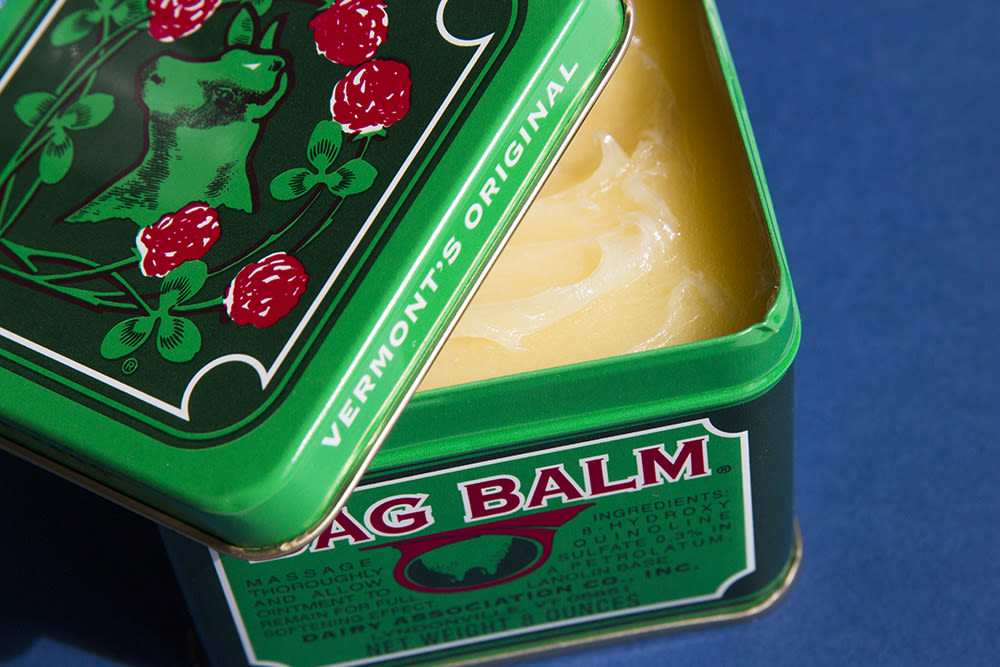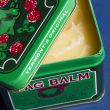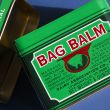The main thing you notice about Bag Balm is that it’s so pretty. Also, it’s easy to find—take a drive out of any major city (at least on the East Coast) and the green, clover-decorated tins start popping up on shelves all around you—in general stores, big box stores, and pharmacies alike. Still, chances are you’ve never actually ponied up and bought the stuff, thanks to that daintily framed image of a cow’s udder on the side of the tin. While a cow you may not be, this distinction doesn’t disqualify you from use of this dutiful, down-home remedy.
Formulated with lanolin, petroleum, and the antiseptic 8-hydroxyquinoline, Bag Balm is a product of Vermont's Original, based in Lyndonville, Vermont. Developed in 1899, it’s as “heritage' as a product can get. It’s thicker than Vaseline and presents a strong, medicinal scent that's pungent at first whiff but wears off on the skin over time.
Created to treat “cake bag,” the common term for udder edema (the post-milking irritation that plagues dairy cows)—Bag Balm also has myriad uses for bipedal humans of the milking and non-milking varieties. The salve is ideal to dab on dry or cracked skin in any region—cyclists apply it for saddle sore, it helps heal minor burns and cuts, soothes freshly tattooed skin, and can mend your pup’s salt-scoured paws (in fact, it was used to treat 9/11 rescue dogs). A debate roils online about its suitability for use post-breastfeeding, so I will direct interested mothers to seek out such discussion boards, but much like Windex in My Big Fat Greek Wedding, Bag Balm is the catch-all, cure-all cream to use when your skin ails you.
—Lauren Maas
Photographed by Tom Newton.




